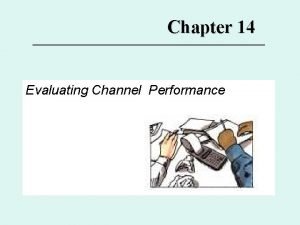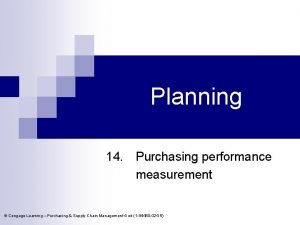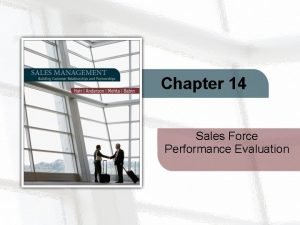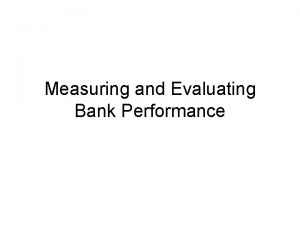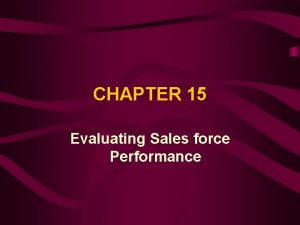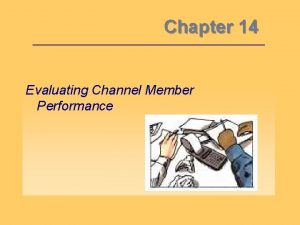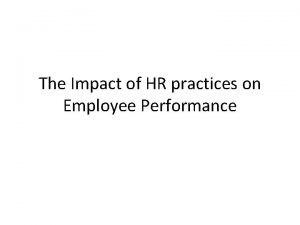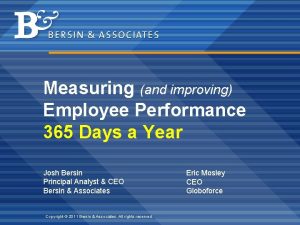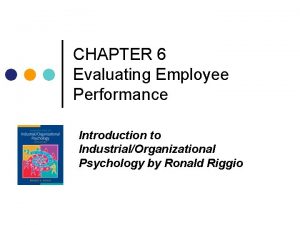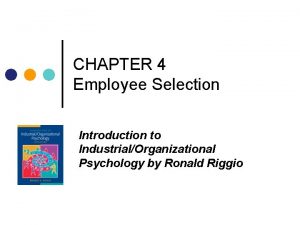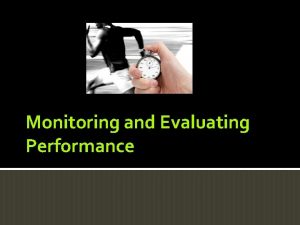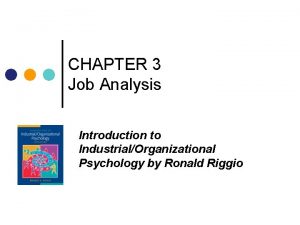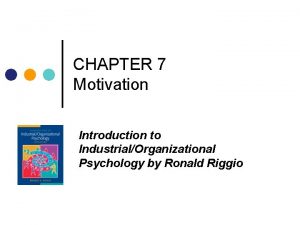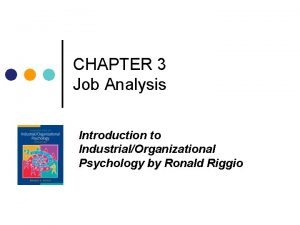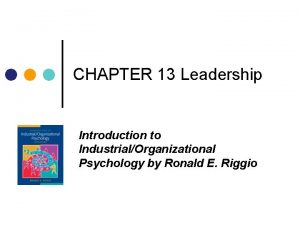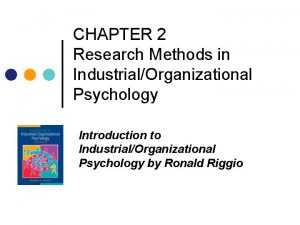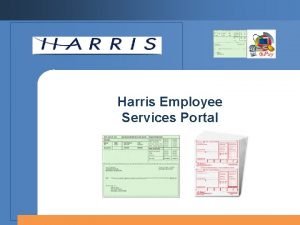CHAPTER 5 Evaluating Employee Performance Introduction to IndustrialOrganizational
















- Slides: 16

CHAPTER 5 Evaluating Employee Performance Introduction to Industrial/Organizational Psychology by Ronald Riggio

Job Performance and Performance Appraisals A thorough job analysis is the starting point for measuring and evaluating actual job performance. ¢ Performance appraisals involve the assessment of worker performance on the basis of predetermined organizational standards. ¢


The Measurement of Job Performance ¢ One way to categorize performance is in terms of objective and subjective criteria. l l Objective performance criteria are more quantifiable measurements of performance, such as the number of units produced or dollar sales. Subjective performance criteria typically involve judgments or ratings of performance.


The Measurement of Job Performance ¢ Concerns for a performance criterion include: l Whether it is relevant to job success (criterion relevance). l Whether the criterion contains elements that detract from the “pure” assessment of performance (criterion contamination). l The degree to which a criterion falls short of perfect assessment of job performance (criterion deficiency). l Whether the criterion is usable (criterion usefulness).

The Measurement of Job Performance Self-appraisals are ratings or evaluations made by the workers themselves. ¢ Peer appraisals involve coworkers rating each other’s performance. ¢ 360 -degree feedback involves getting multiple performance evaluations, from supervisors, peers, subordinates, and customers. ¢

The Measurement of Job Performance ¢ ¢ ¢ Comparative methods of appraisal, such as the paired comparison and forced‑ distribution techniques, directly compare one worker's performance with that of other workers. Individual methods of appraisal do not make direct comparisons with other workers. Individual methods include checklists and forced-choice scales.


The Measurement of Job Performance ¢ ¢ The most common method of individual performance appraisal involves the use of graphic rating scales, where an appraiser uses a standardized rating instrument to make a numerical and/or verbal rating of various dimensions of job performance. The behaviorally anchored rating scale (BARS) uses examples of good and poor behavioral incidents as substitutes for the scale anchors found in traditional rating instruments.


Problems and Pitfalls in Performance Appraisals ¢ ¢ A major problem in rating job performance is caused by systematic biases and errors. Types of response tendency errors include: l l l ¢ Leniency errors. Severity errors. Central tendency errors. Halo effects occur when appraisers make overall positive (or negative) performance appraisals because of one known outstanding characteristic or action.

Problems and Pitfalls in Performance Appraisals ¢ ¢ There also errors caused by giving greater weight to more recent performance, known as regency effects. The actor‑observer bias refers to the tendency for an appraiser to place greater emphasis on dispositional factors and lesser emphasis on situational factors that may have affected performance.

The Performance Appraisal Process ¢ A good performance appraisal consists of two parts: Performance assessment. l Performance feedback. l


Legal Concerns in Performance Appraisals ¢ ¢ Performance appraisals must be valid procedures, resulting from job analyses, that do not unfairly discriminate against any group of workers. Because of the proliferation of work teams, organizations are developing team appraisals–evaluations based on an interdependent group of workers as a unit.
 Employee attitudes and employee performance
Employee attitudes and employee performance Are criteria for evaluating performance of channel members.
Are criteria for evaluating performance of channel members. Purchasing performance evaluation
Purchasing performance evaluation Controlling the sales force is an activity of
Controlling the sales force is an activity of Behaviorally anchored rating scale
Behaviorally anchored rating scale Bank performance
Bank performance Evaluating financial performance
Evaluating financial performance Chapter 3: american free enterprise answer key
Chapter 3: american free enterprise answer key Evaluating sales force performance
Evaluating sales force performance Evaluating channel member performance
Evaluating channel member performance Impact of hr practices on employee performance
Impact of hr practices on employee performance Swot analysis for performance appraisal
Swot analysis for performance appraisal Bersin performance management
Bersin performance management Bersin
Bersin Performance appraisal dpmap employee input examples
Performance appraisal dpmap employee input examples Performance management and appraisal chapter 8
Performance management and appraisal chapter 8 Managing employee performance and reward
Managing employee performance and reward

